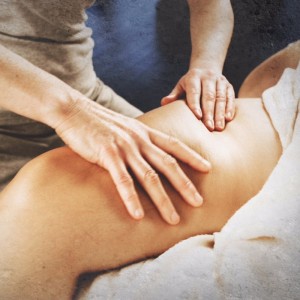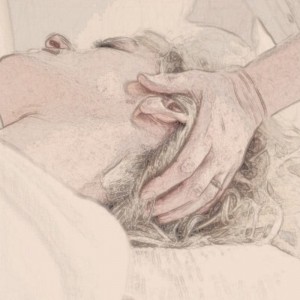LETTING GO THROUGH MASSAGE

If you’ve received massage from me, chances are we’ve had the playful battle of me, trying to get you to release your arm, versus you, insisting that you can’t, or won’t. A lot of people can’t, and I understand that. It’s difficult to surrender control of a limb to a stranger (especially if an old injury is present), and let’s face it: relaxing, in general, is not something widely encouraged in our society. We’re very busy accomplishing many tasks in a single moment, ignoring years of accumulated stress in our bodies while the ability to let go of (perceived) control becomes a skill that must be learned. I’m referring to the idea of letting go, both literally and figuratively. Follow me to the large picture…
For the purpose of this post, I’m talking about passive movements only: passive stretching, simple re-positioning of limbs, draping (the act of folding a sheet around an area to be worked while covering everything else), etc. In other words, I am not referring to neuromuscular techniques that involve client-participation.

When a client helps me reposition their arm or drape their leg, I believe there are several motivations: sometimes people truly think it’s helpful to assist me in lifting their arm or leg back onto the table; others just don’t trust me yet and they need to be in control; often people don’t even realize they’re helping me and yet, occassionally, they do realize they’re helping me but physically cannot send the signal to their hand to stop engaging and relax. This seems innocuous but it’s so much larger.
Here’s why it’s important to refrain from assisting your massage therapist:
Sometimes the weight of your limb is what generates pressure. If I’m working on your bicep a certain way while you’re face down and you’re holding your arm up, there’s no pressure. Who wants that?
Your limbs do not weigh as much as you think they do. This is hilarious & endearing to me: quite frequently, I’ll have a petite woman on my table who can’t weigh more than 100lbs and she’s helping me drape her leg because “it’s so heavy”. Let me tell ya: I’ve been called “Tank” for a reason! I work on 280-pound men. I got this.
I also use the weight of your limb to achieve a tight and secure drape. If you’re face up and I’m working on your quads, I want both of us to feel comfortable and safe. Likewise for every other area.
I’m assessing how well your joint moves, or doesn’t. When I move your head to the side, I’m feeling the joints in your neck and looking at the assisting muscles in your shoulders. When I dangle your arm off the table I’m feeling for inhibition or compensation in & around your shoulder. I can’t determine levels of tension in your muscles if they’re engaged. 
Here is the most important point: If you’re actively ready to assist me with every micro-movement of your limb or adjustment of your foot, then you’re not allowing yourself to let go or relax. Sure, my work can be deep and driven but it’s also extremely relaxing. Zoning out – not thinking – not being held responsible for every little thing for the length of time you’re on my table is one of the greatest benefits. Allow yourself.
This is not to say that I don’t enjoy conversations when they occur. I’m always eager to discuss muscle theory, why pain patterns exist, what to do about them, etc. However, you should never feel pressured to talk. I’ll follow your lead on this.
Merriam-Webster defines stress as:
- a state of mental tension and worry caused by problems in your life, work, etc.
- something that causes strong feelings of worry or anxiety
- physical force or pressure
 When humans feel threatened our primal instinct is engaged to protect the internal organs otherwise blatantly on display in our bi-pedal forms: the head is pushed forward, the shoulders move up and forward, the pelvis is tilted inward. The problem is, we typically don’t fly or fight. We continue working and seething, trying desperately to ignore the stress we feel. If we don’t actually let it go in some way (physical exertion, meditation, etc), it ends up in our posture: forward necks, elevated shoulders, and tilted pelvises.
When humans feel threatened our primal instinct is engaged to protect the internal organs otherwise blatantly on display in our bi-pedal forms: the head is pushed forward, the shoulders move up and forward, the pelvis is tilted inward. The problem is, we typically don’t fly or fight. We continue working and seething, trying desperately to ignore the stress we feel. If we don’t actually let it go in some way (physical exertion, meditation, etc), it ends up in our posture: forward necks, elevated shoulders, and tilted pelvises.
In the 7+ years I’ve been doing massage, I’ve been fortunate to know m-a-n-y different types of personalities, and along the way I’ve made some really interesting observations. The most unequivocal is this: There is a stark correlation between people who can let go of their bodies while lying on a massage table and people who can let go of stressful situations while living their lives off the massage table. Nothing – no matter how big or small – is worth carrying years of stress and the inevitable pain & illness it brings.
So when I gently shake your arm or insist that your leg is not too heavy, all I ask is that you try to relax. It’s for your own good!
